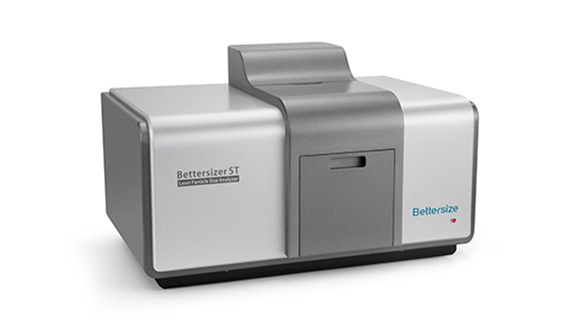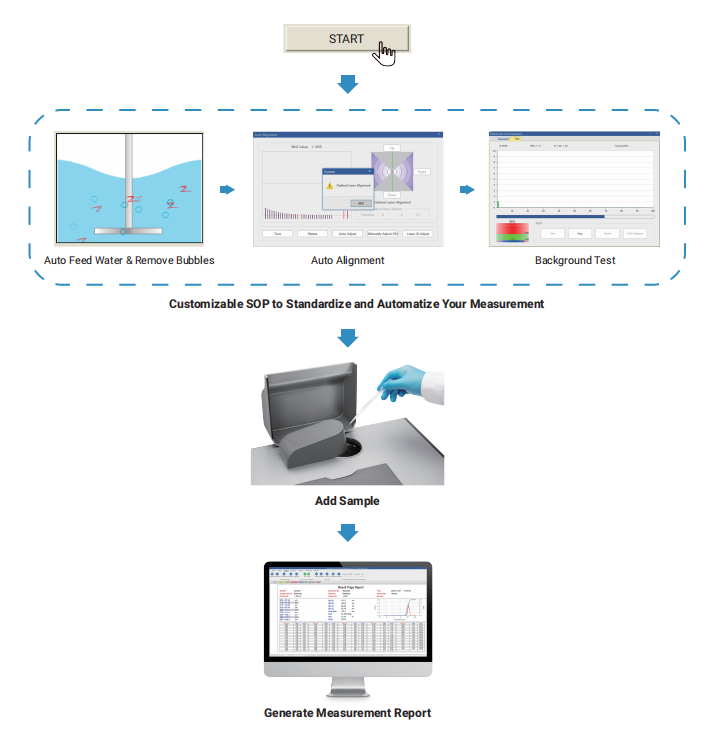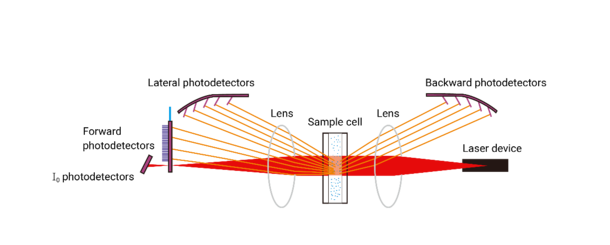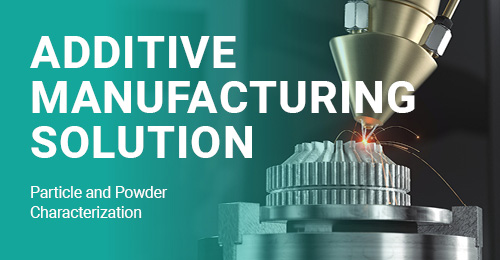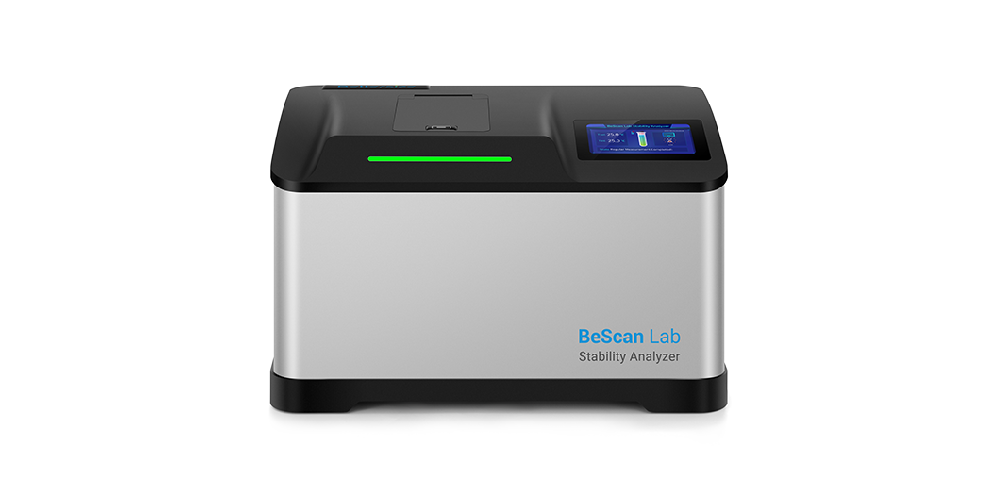Bettersizer STは、湿式分散測定に対応した全自動・一体型粒子径分布測定装置です。品質管理向けのBettersizer STは、手作業でのミスを減らし、高精度で再現性の良い測定結果を提供します。機能を十分に搭載しながらも省スペースにこだわっており、生産現場やラボなど幅広いシーンで活躍しています。
機能と利点
- ● 湿式分散
- ● 測定範囲: 0.1 – 1000 μm
- ● 頑丈な構造
- ● 使いやすさ
- ● メンテナンスが容易
- ● 分析部と前処理部を一体化した、コンパクトな設計
- ● コストパフォーマンスが良い
- ● SOP(標準操作手順)を準じて自動測定可能
- ● ひと目でわかる測定画面により操作性が良い
ビデオ
How to Install and Operate Bettersizer ST 
Bettersizer ST Self-Installation is Quick and Easy 
Learn How Bettersizer ST can Help with Your Quality Control in 2 Minutes 
Bettersizer ST | Demo (CaCO3 Sample) 
Bettersizer ST Overview | Laser Diffraction Particle Size Analyzer for QC 
概要
品質管理を支えるオールインワンツール
Bettersizer STは、品質管理向けに設計された全自動・一体型レーザー回折式粒子径測定装置です。特許取得済みのDLOS(Dual Lens Optical System)を搭載し、高精度で安定した粒度分布測定を実現します。SOP(標準操作手順)と自動解析機能により、品質検査の効率を向上させ、貴重な時間を節約できます。
1. 測定精度
♦ 標準粒子による精度検証
- Duke標準試料をBettersizer STで測定した結果、分布ピークが正確な位置に現れ、狭い分布幅で高い精度が確認されました。
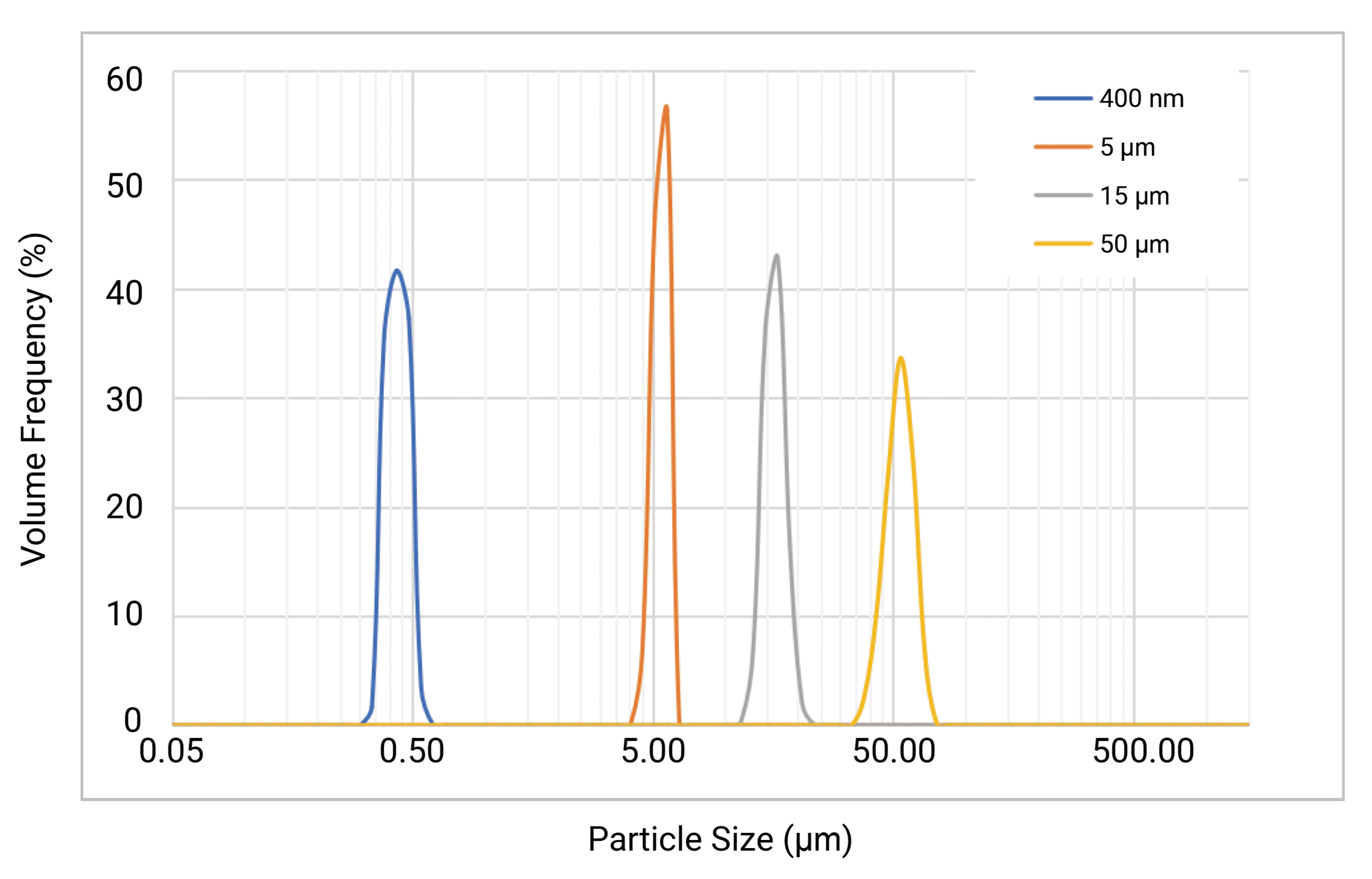
- 赤いラインは標準試料の公称粒径範囲(±1.0%)、黒い点は測定値を示しています。図のとおり、Bettersizer STによる標準試料の測定精度の誤差は1%以内に収まっています。
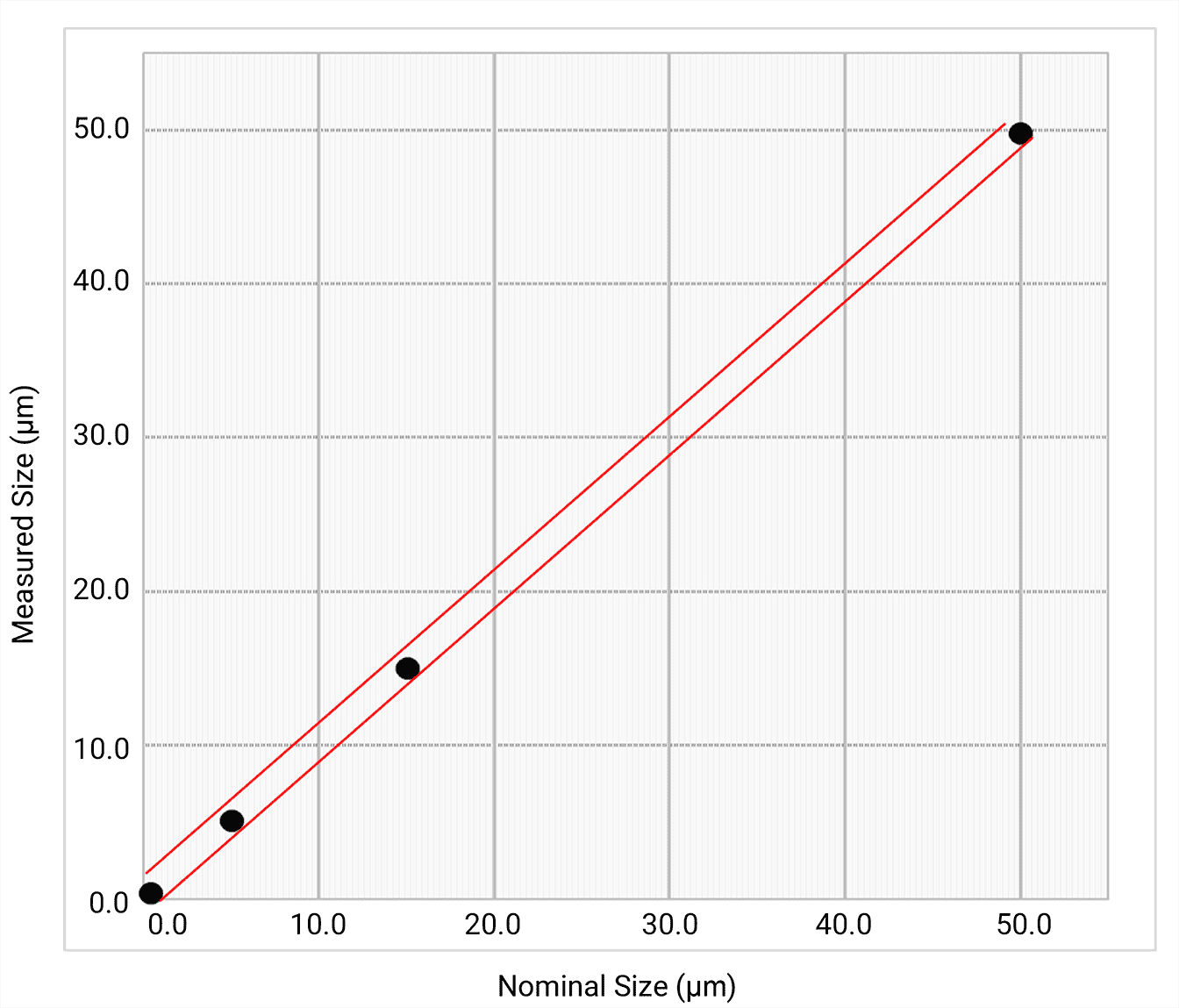
2. 再現性
Bettersizer STは卓越した再現性を備えており、測定結果の信頼性を確保します。迅速な測定と一貫した安定した結果により、品質管理業務の負担を軽減します。
♦ 高い再現性を支える技術
- 信号伝送システムの高い安定性
- 効率的な分散システム
- 自動アラインメント機能により常に最適な状態を維持
- 最大3,500回/秒の信号取得
♦ 再現性試験
以下の2回連続測定の結果から、Bettersizer STの優れた再現性が確認されました。
 |
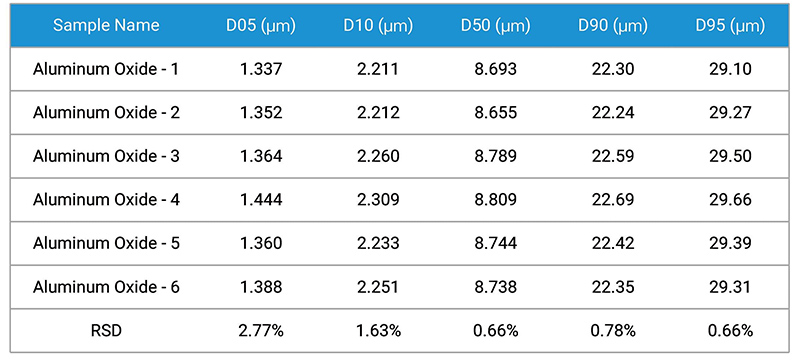 |
 |
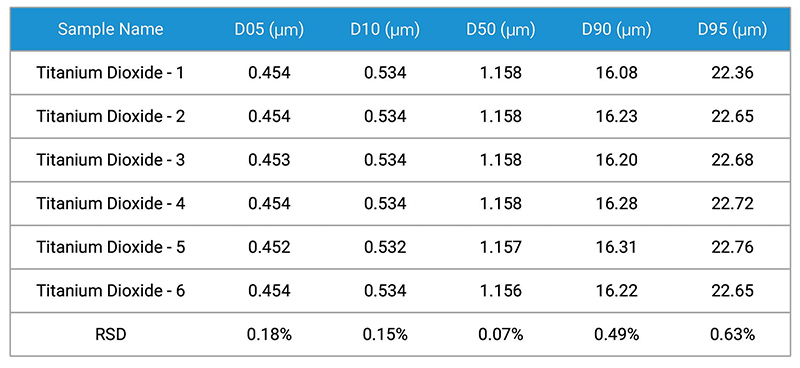 |
3. あらゆる面で業務負担を軽減
Bettersizeソフトウェアは、多彩な機能を備え、作業負担を大幅に軽減します。
1) 直感的に操作できるソフトウェア
2) 品質管理を支援するインテリジェントなデータ解析

3) 性能検証
独立した性能検証機能により、ISO 13320および各国薬局方に準拠したレポートを自動作成できます。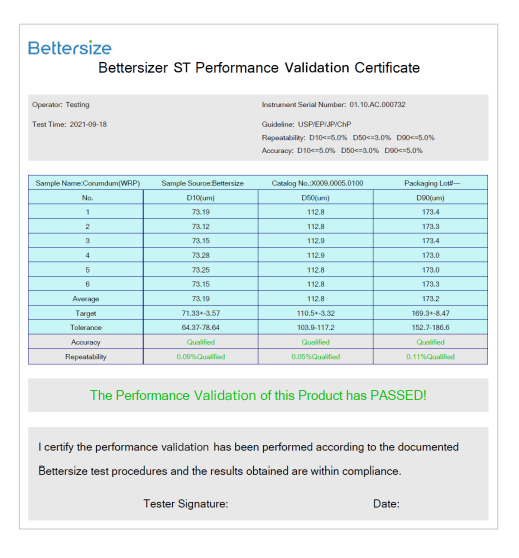
4) 装置診断
装置診断のためのチェックリストが内蔵されており、ユーザー自身で装置の状態を確認できるため、メンテナンスの手間を大幅に軽減できます。
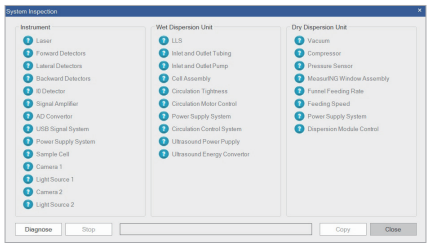
4. コスト効率と堅牢性
1) 優れた堅牢性
- 装置をしっかり保護する一体型底板の鋳造
- 堅牢性試験の後でも、安定した高精度な測定を行える
- 長寿命のファイバー半導体レーザー光源を搭載
- 耐久性に優れたステンレス製循環タンク
- ドライラン保護機能付きの可変出力超音波分散器により、安心して使用可能
2) コンパクトな設計
- 内蔵湿式分散システムにより、工場や研究室の貴重な作業スペースを最大限に活用
- LOS技術により、精度と信頼性の高い結果を提供し、誤調整のリスクが少ない設計
3) 簡単なメンテナンス
- サンプルセルは簡単に分解でき、専門的な工具や複雑な手順を必要とせず、迅速に洗浄可能
- 循環タンクの自動洗浄機能によりメンテナンス作業を大幅に軽減
- 自動洗浄プロセスはソフトウェアでクリックすることで簡単に実行し、使用者のニーズに応じた対応が可能
4) お求めやすい価格
- 初心者向けのレーザー回折式粒子径分析装置としてお手頃な価格帯
- DLOS光学系によって、追加のレーザー光源なしで多様な用途に対応し、広範囲な測定が可能
Citations
- Bettersizer 2600
Functional redundancy as an indicator for evaluating functional diversity of macrobenthos under the mussel raft farm near Gouqi Island
DOI: 10.1016/j.aquaculture.2023.740024 Read ArticleZhejiang Ocean University | 2024Biological traits analysis (BTA) helps to evaluate the effects of different environmental variables on the traits-based functional composition of macrobenthos. However, research on functional traits of macrobenthos under mussel farming is limited. We investigated the spatial and temporal response of the benthic system in terms of taxonomic and functional diversity to environmental variables of farming and natural stressors resulting from suspended mussel farming near Gouqi Island of eastern China Sea. The functional traits of macrobenthic assemblages under mussel farming were characterized by “medium adult body size”, “vermiform body form”, “high flexibility”, “infauna”, “semi-motile”, “gonochoristic”, “surface deposit-feeders”, “carnivores”, “semi-motile burrowers”, and “tube-dwellers”. Functional redundancy was stable in response to mussel farming stresses among seasons, whereas species diversity showed efficient to evaluate natural variables. Functional diversity was significantly affected by farming stressors rather than natural variables, Further analysis using multivariate methods together with continuous monitoring were highlighted to evaluate the impacts of mussel farming. Our results reinforce the importance of macrobenthic species and functional traits analysis to evaluate human stresses driven impacts in offshore ecosystems. By analysing the environmental variables with different sources, independently, we concluded the main effects of human pressures on macrobenthic community. Such distinction could be particularly effective to isolate variable environmental descriptors and evaluate their effects on functional diversity, making the current approach promising for the evaluation of ecological effects of anthropogenic stressors in aquaculture areas. - Bettersizer 2600
Degradation characteristics and utilization strategies of a covalent bonded resin-based solid amine during capturing CO2 from flue gas
DOI: 10.1016/j.seppur.2023.125621 Read ArticleChina University of Petroleum | 2024In this study, various types of degradation as well as attrition which are possibly encountered in a circulating fluidized bed temperature swing adsorption (CFB-TSA) process, were conducted experimentally to evaluate the stability of a resin-based solid amine sorbent. Other characterizations methods, such as elemental analysis (EA), Fourier transform infrared spectroscopy (FTIR) etc. were applied to further reveal the degradation mechanisms. The results showed that thermal degradation occurs from 140–160 °C due to the decomposition of amine group. The CO2-induced degradation occurs from a higher temperature of 160–180 °C accompanied by the production of urea. Hydrothermal stability is good below 130 °C, but the ionic impurities in steam crystalized on particle surface can accelerate the degradation. Oxidative degradation is the most harmful, which starts at a lower temperature of 70–80 °C with the formation of aldehyde. The existence of H2O in atmosphere can alleviate the oxidative and CO2-induced degradations. The employed sorbent has a very low attrition index of 0.05, which is 1–2 orders lower than typical commercial fluidized bed catalysts. Based on the results of stability evaluation, some design suggestions for proper utilization of this sorbent or other similar resin-based sorbents have been provided in an industrial CFB-TSA process.
- Bettersizer 2600
De-branching of starch molecules enhanced the complexation with chitosan and its potential utilization for delivering hydrophobic compounds
DOI: 10.1016/j.foodhyd.2023.109498 Read ArticleShihezi University | 2024The current study aimed to prepare the complexes between debranched-waxy corn starch and chitosan polymers (DBS-CS), and then investigated their corresponding structural characteristics, rheological property and potent application in Pickering emulsion. The results indicated that the existence of chitosan significantly inhibited starch short-range molecular rearrangement for all DBS-CS samples, which was manipulated by both debranching treatment and chitosan content. Interestingly, this is the first study to reveal that the outstanding peak at 1.8 ppm in 1H NMR spectrum for sample DBS-CS was gradually shifted towards a lower-field region following an increased chitosan content. Moreover, the debranching treatment shifted the crystallinity pattern from A-type to B-type and the relative crystallinity of DBS-CS decreased gradually with the increased content of CS. All samples had a pseudoplastic fluid and shear-thinning behavior with an enhanced shear resistance following the complexation. The DBS-CS was applied in a Pickering emulsion for showing a greater emulsifying stability and a lower gel strength than native NS-CS prepared emulsion. Importantly, the encapsulation ability of curcumin in the DBS-CS emulsion was significantly improved, followed by an increase of 15.45% for its corresponding bioavailability compared to the control. Therefore, this study might highlight a potential carrier for delivering the bioactive substances in a green pattern. - Bettersizer 2600
Heat-induced aggregation behavior of wheat gluten after adding citrus pectin with different esterification degree
DOI: 10.1016/j.foodhyd.2023.109420 Read ArticleGansu Agricultural University | 2024Wheat gluten aggregation during heat treatment is beneficial to the final quality of gluten-based products. Exogenous pectin can affect gluten aggregation. However, the effect of pectin with different degrees of esterification on the heat-induced aggregation behavior of gluten and its possible mechanism are still unclear. Thus, the heat-induced aggregation behavior of gluten after adding pectin with different esterification degree was studied in this study. When the temperature was raised from 25 °C to 95 °C, pectin affected gluten aggregation and was related to the degree of esterification. Specifically, the results of rheological properties and particle size indicated that low-ester pectin improved the viscoelasticity of gluten and promoted gluten aggregation. Thermal properties revealed that enthalpy of gluten added with low-ester pectin (37%) increased from 92.96 J/g to 95.40 J/g during heating process. Structurally, the fluorescence intensity and surface hydrophobicity of gluten added with low-ester pectin (37%) were lower than those added with high-ester pectin (73%). In addition, low-ester pectin (37%) significantly increased the disulfide bond content (from 15.31 μmol/g to 18.06 μmol/g) and maintained β-sheet content of gluten compared with gluten alone at 95 °C, indicating that low-ester pectin was more likely to induce gluten aggregation. However, scanning electron microscope showed that the gluten added with low-ester pectin (46%) exhibited a denser network structure at 95 °C than that added with low-ester pectin (37%). These results will provide a theoretical base for the regulation of gluten aggregation and the quality of gluten-based products by pectin with different esterification degree.
- 1
- 2
- 3
- 4
- 5
- 6
- 84
厳選されたリソース
お客様のお声



